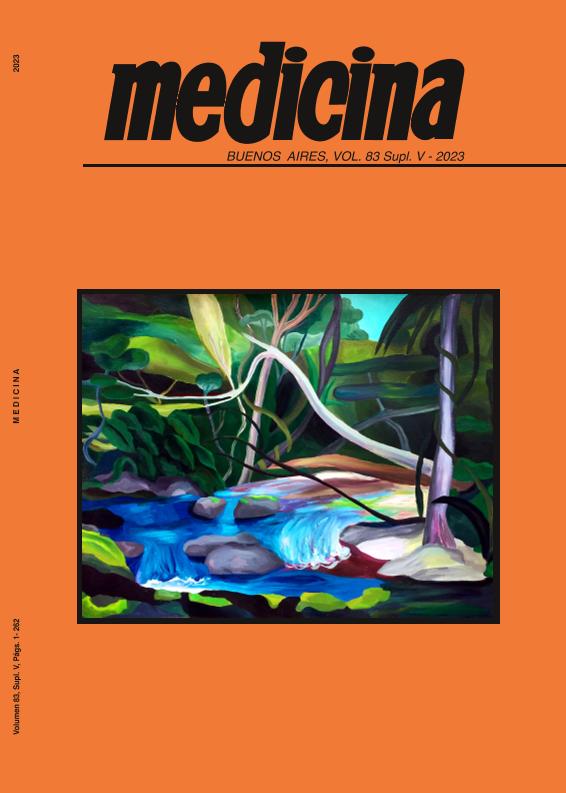Evento
In-feed drug medication in pig production: effects on xenobiotic metabolizing enzymes
Ichinose, Paula ; Larsen, Karen Elizabeth
; Larsen, Karen Elizabeth ; Miró, María Victoria
; Miró, María Victoria ; Lifschitz, Adrian Luis
; Lifschitz, Adrian Luis ; Virkel, Guillermo Leon
; Virkel, Guillermo Leon
 ; Larsen, Karen Elizabeth
; Larsen, Karen Elizabeth ; Miró, María Victoria
; Miró, María Victoria ; Lifschitz, Adrian Luis
; Lifschitz, Adrian Luis ; Virkel, Guillermo Leon
; Virkel, Guillermo Leon
Tipo del evento:
Reunión
Nombre del evento:
LXVIII Reunión Anual de la Sociedad Argentina de Investigación Clínica; XXV Jornadas Anuales de la Sociedad Argentina de Biología; LV Reunión Anual de la Asociación Argentina de Farmacología Experimental y VIII Reunión Científica Regional de la Asociación Argentina de Ciencia y Tecnología de Animales de Laboratorio
Fecha del evento:
15/11/2023
Institución Organizadora:
Sociedad Argentina de Investigación Clínica;
Sociedad Argentina de Biología;
Asociación Argentina de Farmacología Experimental;
Asociación Argentina de Ciencia y Tecnología de Animales de Laboratorio;
Título de la revista:
Medicina (Buenos Aires)
Editorial:
Fundación Revista Medicina
ISSN:
0025-7680
Idioma:
Inglés
Clasificación temática:
Resumen
In-feed medication with the anthelmintic fenbendazole (FBZ) is routinary in pig husbandry. This drug undergoes hepatic metabolism through cytochrome P450 (CYP) and flavin-monooxygenase (FMO) enzyme families. Also, FBZ and its metabolite oxfendazole (OFZ) may induce the CYP1A subfamily. This work aimed to evaluate the effect of FBZ administration on i) CYP1A-dependent enzyme activities; ii) its own pattern of hepatic S-oxidation; iii) the metabolism of enrofloxacin (ERF) and aflatoxin B1 (AFB1). Female Landrace piglets remained untreated (n=5) or received a pre-mix of FBZ in feed as usually is recommended for 9 days (n=6). Liver microsomes from control and FBZ-treated animals were used for i) CYP content determination; ii) monitoring CYP1A-dependent enzyme activities, 7-ethoxyresorufin O-deethylase (EROD) and methoxyresorufin O-demethylase (MROD); iii) measurement of FBZ (50 µM) S-oxidation, ERF (50 µM) conversion into ciprofloxacin (CPF) and AFB1 (16 nM) disappearance. In liver microsomes from treated animals, EROD and MROD increased 20-fold (p=0.002) and 19-fold (p=0.001), respectively. An enhanced (3-fold, p=0.0037) participation of the CYP pathway in the hepatic S-oxidation of FBZ into OFZ was observed in the liver of piglets receiving FBZ compared to controls. ERF conversion into CPF increased (p=0.014) from 26.5±8.4 pmol/min.nmol CYP (controls) to 139.4±60.1 pmol/min. nmol CYP (FBZ-treated). The rate of disappearance of AFB1 in FBZ-treated pigs was 79% higher (p=0.036) compared to control animals. An auto-induction of the CYP1A-dependent S-oxidation of FBZ towards its active metabolite OFZ was observed. The in-feed medication with FBZ may cause potential metabolic interactions with the antimicrobial ERF and the mycotoxin AFB1. Enzyme induction caused by the anthelmintic may modify the pharmacokinetic behaviour of ERF and CPF. In addition, induction of the CYP1A-dependent metabolism of AFB1 may increase the production of a hepatotoxic AFB1-derived epoxide.
Palabras clave:
FENBENDAZOLE
,
CYTOCHROME P450
,
ENROFLOXACIN
,
METABOLISM
Archivos asociados
Licencia
Identificadores
Colecciones
Eventos(CIVETAN)
Eventos de CENTRO DE INVESTIGACION VETERINARIA DE TANDIL
Eventos de CENTRO DE INVESTIGACION VETERINARIA DE TANDIL
Citación
In-feed drug medication in pig production: effects on xenobiotic metabolizing enzymes; LXVIII Reunión Anual de la Sociedad Argentina de Investigación Clínica; XXV Jornadas Anuales de la Sociedad Argentina de Biología; LV Reunión Anual de la Asociación Argentina de Farmacología Experimental y VIII Reunión Científica Regional de la Asociación Argentina de Ciencia y Tecnología de Animales de Laboratorio; Mar del Plata; Argentina; 2023; 1-5
Compartir



